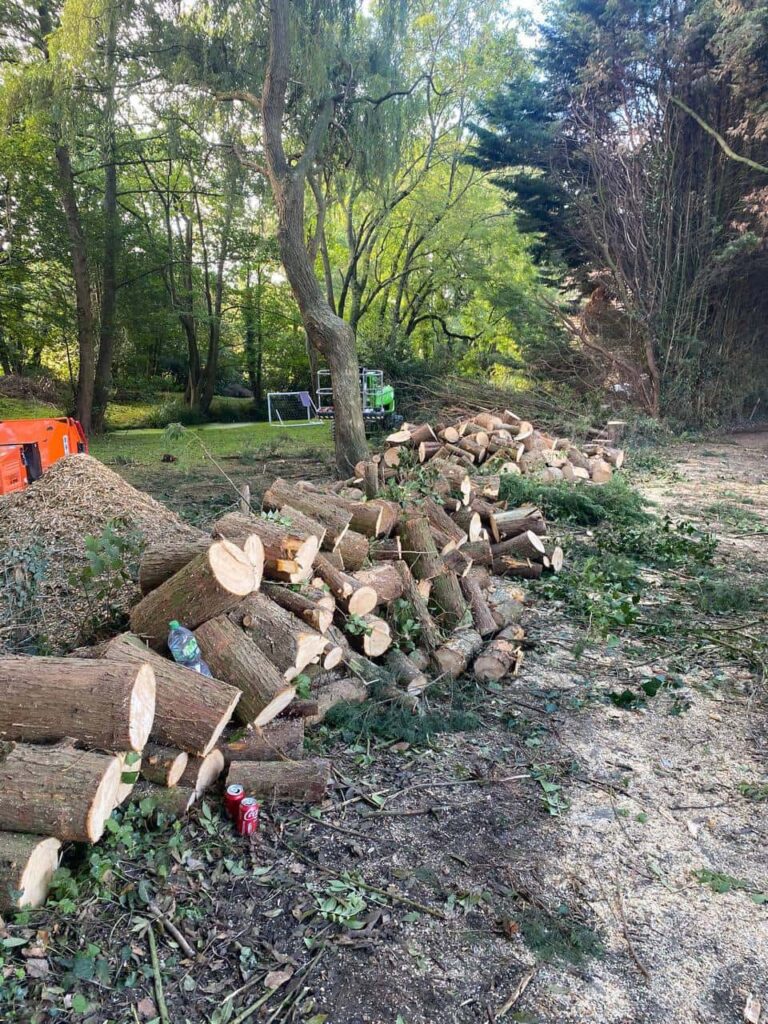That Tree Stump Is More Dangerous Than You Think
Introduction
After felling a tree, many homeowners in Rothwell understandably breathe a sigh of relief. The danger has been removed, right? Unfortunately, the job isn’t over just yet. That leftover tree stump—although it may appear harmless—is often a silent hazard. It’s not just an unsightly remnant in your garden; it can compromise safety, property health, and even the appearance of your outdoor space.
At Rothwell Tree Surgeons, we’ve seen how neglected stumps can lead to ongoing problems. Whether it’s trip risks, unwanted growth, or pest infestations, a stump left behind rarely stays passive. If you’re tempted to leave it “for now,” here’s why you should reconsider.
Trip Hazards: A Risk You Can’t Ignore
One of the most immediate dangers of a leftover tree stump is its ability to cause trips and falls—especially if it’s partially hidden by grass or moss. This is particularly concerning for households with children, elderly residents, or frequent visitors.
Common risk scenarios:
- Children running around the garden unaware of the obstacle
- Grass or ground cover disguising the height or edge of the stump
- Poor lighting making it hard to spot after dark
- Visitors unfamiliar with your garden layout
It doesn’t take much for an accident to happen—and unfortunately, these injuries can be more serious than you might expect.
It Can Damage Your Lawn Equipment
Tree stumps don’t just pose a danger to people. They can also do a fair bit of damage to your garden equipment. Lawnmowers and strimmers are particularly vulnerable.
Issues you might encounter:
- Blades getting chipped or dulled from hitting the stump
- Machines becoming unbalanced or jolted
- Struggling to mow evenly around the base
- Unkempt areas forming around the stump
This can lead to both expensive repairs and a frustrating mowing experience.
Attracts Insects and Pests
Decaying wood is like a neon sign for insects. Left to rot, stumps attract a wide range of unwelcome guests—from ants to wasps, beetles, and termites. And it doesn’t stop there. These pests can then spread to healthier plants, your shed, or even the structural timbers of your house.
Pest concerns include:
- Wood-boring insects making nests in the stump
- Fungal growth attracting slugs and other moisture-loving bugs
- Risk of termites or carpenter ants migrating towards wooden structures
- Shelter for rodents in winter
Removing the stump eliminates this inviting habitat and helps protect the health of the rest of your garden—and your home.
Causes Unwanted Regrowth
In many cases, the stump isn’t dead. Without proper removal, some tree species can continue to sprout from the stump, sending up small shoots that try to grow again. Not only does this ruin the visual appeal of your garden, but it also creates additional maintenance headaches.
You may notice:
- Clusters of weak, thin shoots emerging around the stump
- Root systems continuing to spread underground
- Regrowth around patios, pathways, or borders
- Difficulty in completely killing the root system without specialist help
This regrowth can be persistent and costly to manage without professional stump grinding or treatment.
Root Damage Below the Surface
Even if the visible part of the stump is relatively small, its root system can still be very active underground. These roots can continue to affect nearby structures long after the tree has been felled.
Root-related risks:
- Interference with underground pipes or drains
- Damage to driveways, paving, or foundations
- Competition with surrounding plants for water and nutrients
- Soil movement or heaving as roots decay unevenly
At Rothwell Tree Surgeons, we often find that removing the stump is the best way to stop root-related issues from worsening.
A Magnet for Fungi and Disease
Dead stumps are a haven for fungal spores. While some may be harmless, others can spread disease to healthy plants and trees nearby. In many cases, this type of infection can lie dormant and go unnoticed until it’s done significant damage.
Fungus problems may include:
- Bracket fungi and honey fungus colonising the area
- Discolouration or wilt in nearby shrubs and flowers
- Contaminated soil reducing planting success
- Difficulty replanting in that location without proper remediation
The only reliable way to reduce fungal risk is to fully remove the stump and its decaying root base.
Devalues Your Garden Space
Last but not least, stumps are simply unattractive. They make your garden look unfinished, cluttered, and less cared-for. For homeowners looking to sell or simply enjoy their outdoor space, a leftover stump can detract from the aesthetics of your property.
Visual impact:
- Obstructs landscaping or planting plans
- Breaks the flow of a tidy lawn or path
- Gives the impression of neglect
- Can deter potential buyers or tenants
Investing in stump removal is also an investment in your garden’s visual appeal and usability.
Conclusion
Tree stumps may appear innocent, but they come with a long list of hidden risks—safety hazards, pest attraction, regrowth issues, and even structural concerns. Whether it’s been months or years since your tree was felled, the stump could be doing more harm than you realise.
At Rothwell Tree Surgeons, we provide professional, efficient stump removal services across Rothwell and surrounding areas in Northamptonshire. If you’re ready to reclaim your garden space, protect your property, and avoid future issues, we’re here to help with expert care and proven results. Removing that stump now could save you from far bigger problems later.
Call us on: 01536 903 994
Click here to find out more about Rothwell Tree Surgeons
Click here to complete our contact form and see how we can help with your tree needs.

